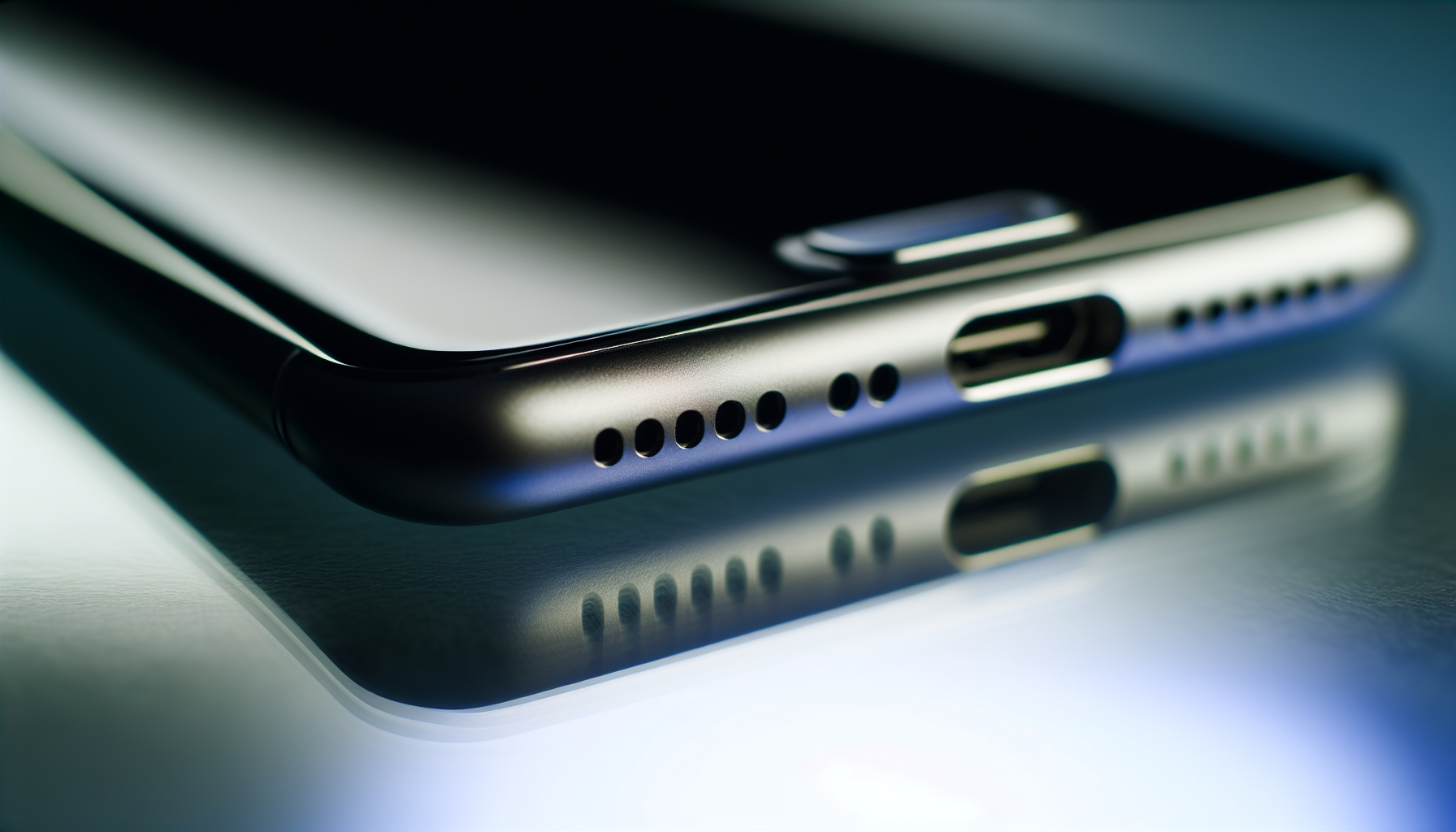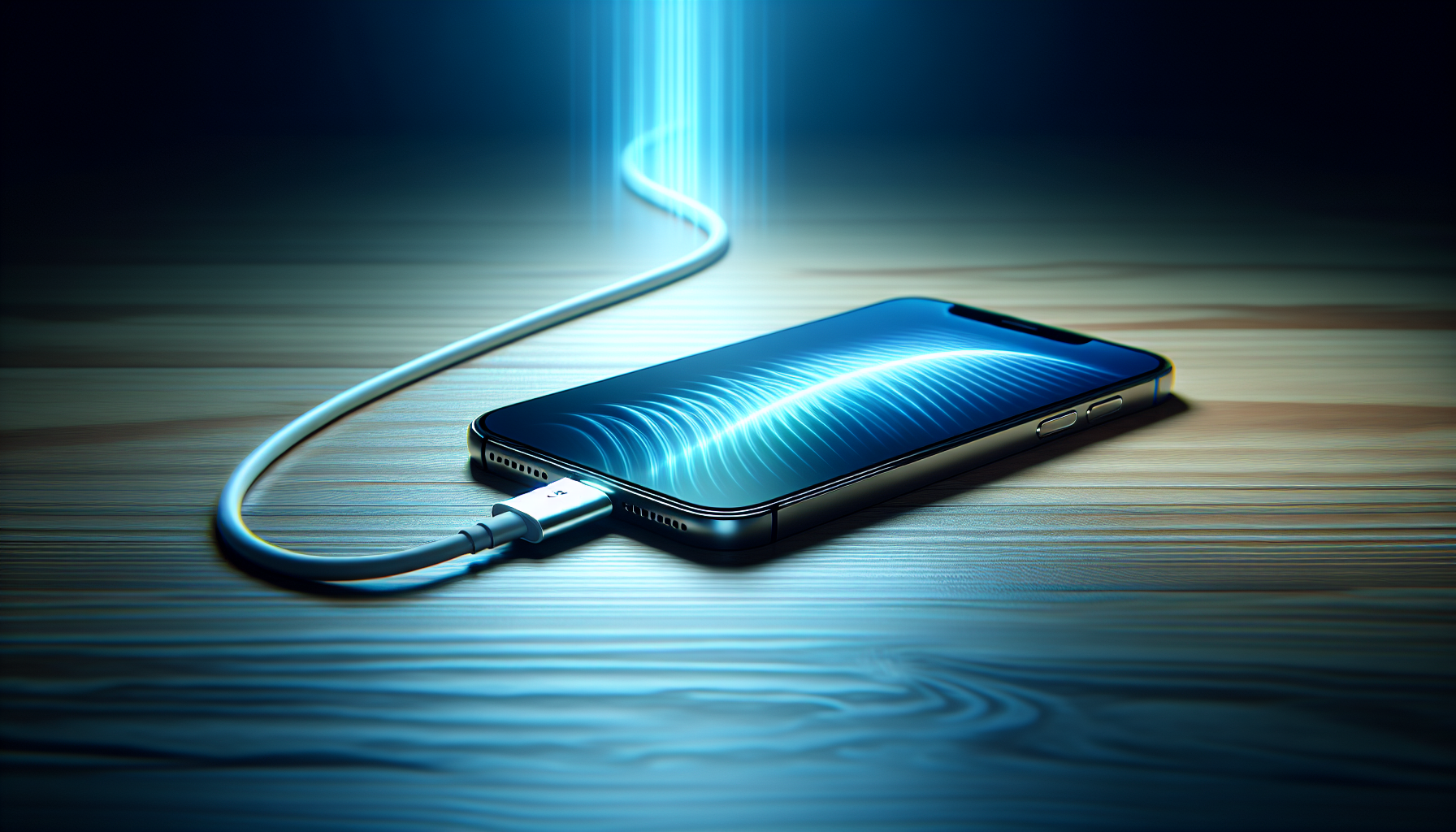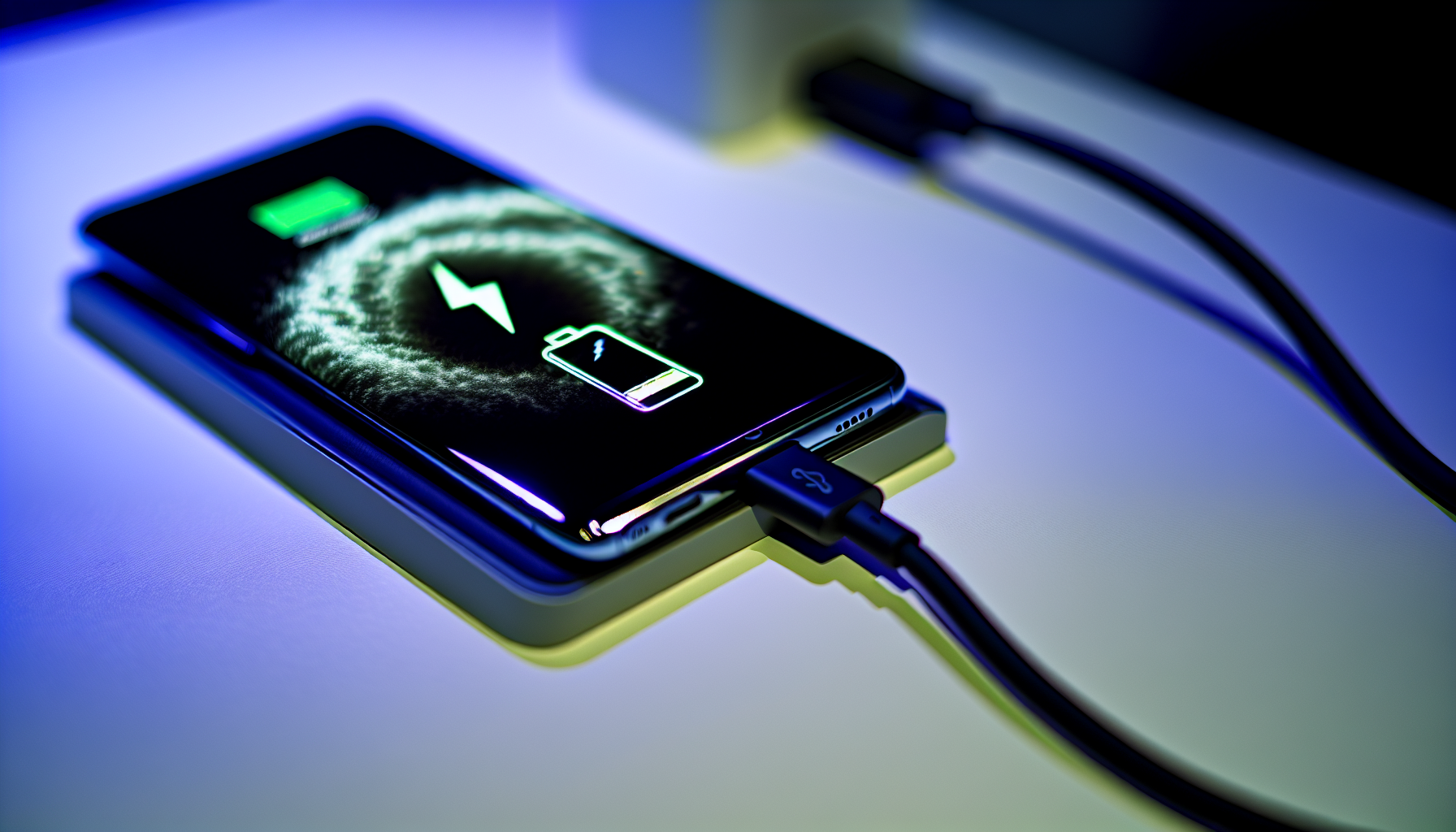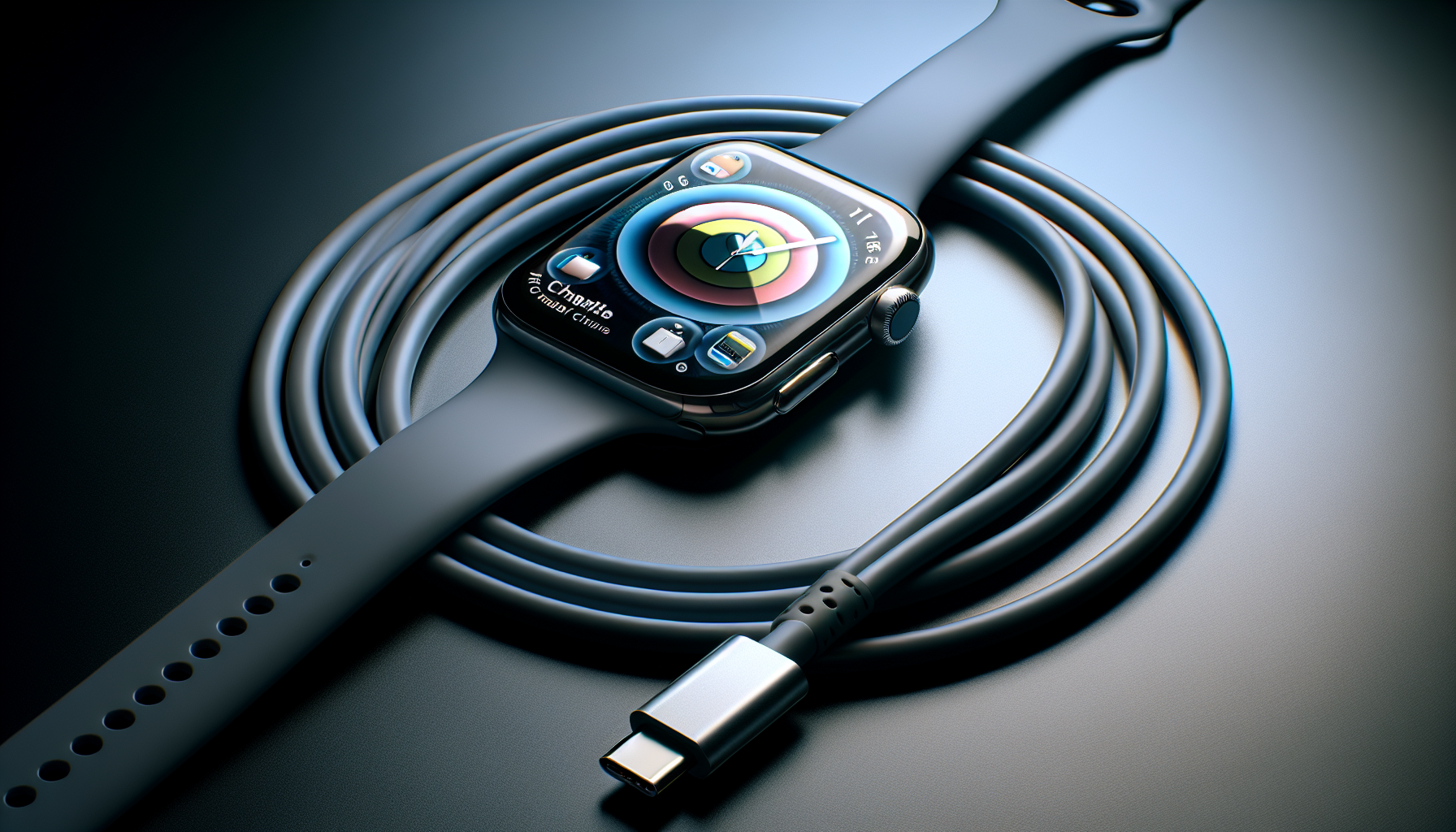Wondering if USB-C has arrived on the iPhone? The iPhone 15 initiates the era of “usb c on iphone”, offering enhanced connectivity and faster charging. Explore the transformation and what it means for your Apple experience.
Key Takeaways
- Apple is integrating USB-C into iPhones to comply with EU regulations and enhance user experience, signifying the end of the exclusive Lightning connector era.
- The iPhone 15 series introduces USB-C with varying capabilities, with standard models offering USB 2.0 speed, while Pro models support faster USB 3.1 Gen 1 and USB 3.2 Gen 2 standards.
- The transition to USB-C in the iPhone 15 facilitates fast charging via USB Power Delivery and involves adapting to new accessories and potential future changes in Apple’s device ecosystem.
The Dawn of USB-C on iPhone: A New Era of Connectivity

The tech industry experiences a pivotal shift with Apple’s journey towards USB-C integration, driven by the universal standard need and legislative pressure from the European Union. Apple has until the end of 2024 to comply with these new EU regulations, and senior executives have confirmed this upcoming transition. Initial glimpses of what the future holds came in 2023, when leaked images and expectations began to surface, hinting at the introduction of the USB-C port in the iPhone 15 series.
Apple’s move is not merely a policy reaction; it consciously paves the way towards a sustainable and user-friendly future. The USB-C port is set to usher in a connectivity revolution, transforming the interaction of iPhone users with their devices. It signifies the end of the exclusive Lightning connector era, making way for the lightning port to be replaced by a world where a single USB-C cable can charge your phone, iPad, and even your MacBook through the USB C charging port.
The Inside Scoop on iPhone 15's USB-C Port

With the iPhone 15 series, Apple makes its initial venture into Apple USB-C territory for its flagship smartphones, introducing the world to USB C iPhones. This series not only complies with the new standards but also elevates the user experience with enhanced capabilities.
The USB-C ports across the series vary in their offerings, ranging from standard models optimized for the everyday user to Pro variants designed for the power user demanding high-speed data transfer and advanced display output.
iPhone 15 Standard Model: USB-C Capabilities
Incorporating the USB-C port, the standard iPhone 15 model provides the following features:
- Data transfer at the USB 2.0 peak rate of 480 Mbps
- Seamless transition for users from the previous Lightning connectors, maintaining a familiar user experience
- Versatility to connect to a variety of audio accessories and external storage options
For those who capture high-quality content, the ability to directly record 4K ProRes videos onto an external drive is an invaluable addition, particularly when dealing with the base model’s storage limitations.
iPhone 15 Pro Variants: Advancing with USB-C
Elevating the stakes, the iPhone 15 Pro versions offer an enhanced USB-C experience. They support USB 3.1 Gen 1 and USB 3.2 Gen 2, delivering data transfer speeds that can reach up to 10 Gbps. This is a game-changer for professionals who need to move large files quickly or want to harness the power of direct 4K video output to external displays at a smooth 60Hz.
The Pro models are also equipped for high-performance scenarios such as recording 4K ProRes videos directly to an external SSD, leveraging the fast USB 3 capabilities for efficient workflows.
Charging Ahead: USB-C Power Delivery in the iPhone 15

With the iPhone 15’s adoption of USB-C, a new charging paradigm emerges through USB Power Delivery (USB-PD) and wired charging. This technology enables fast charging capabilities that were not possible with the previous Lightning connector. Users wielding a 20W or higher power adapter can now rejoice as their iPhone 15 can reach up to 50% battery charge in a mere 30 minutes.
What’s more, these fast-charging features are available across both standard and pro models, ensuring that every iPhone 15 user can benefit from the expedited power-up times.
Adapting Your Arsenal: Transitioning from Lightning to USB-C Accessories
Mastering the transition from Lightning to USB-C accessories is a vital aspect of adopting the new iPhone 15 series. While the change heralds a more universal charging and data transfer standard, it also necessitates some adjustments for users.
Adapters will become a common sight for those wishing to continue using their beloved Lightning accessories, while others may choose to fully commit to the USB-C evolution by investing in new peripherals that promise faster charging and data transfer speeds.
Making the Switch: Using Adapters for Legacy Accessories
Many users have a trove of Lightning accessories accumulated over the years, and with the introduction of USB-C on the iPhone 15, there’s a need to bridge the compatibility gap. Apple’s solution is a range of official adapters, including the usb c to lightning adapter, designed to convert your existing Lightning accessories for use with the new USB-C interface. For those seeking third-party alternatives or other apple accessories, it’s crucial to opt for MFi-certified adapters to ensure a smooth transition and proper functionality with your Apple devices.
A practical tip for managing these small yet vital components is to keep them attached to USB-A slots on other devices when not in use, safeguarding against misplacement and ensuring they’re always ready for action.
Future-Proofing: Investing in USB-C Accessories
As the tech world gravitates towards a more unified connection standard, investing in USB-C accessories for your iPhone 15 makes practical sense. Not only does it align your tech arsenal with the latest trends, but it also prepares you for the broader shift across consumer electronics, including apple accessories.
Look for USB-IF certified USB-C cables and consider multi-port hubs that offer versatility, such as iWALK’s 33W wall adapter with both USB-C and USB-A ports. These accessories not only cater to the new iPhone but also support a wide range of devices, providing a future-proof solution that streamlines your tech experience.
Beyond the iPhone: The Ripple Effect of USB-C Adoption

The ripple effect of USB-C adoption on the iPhone extends far beyond just the smartphone itself. It represents a unifying thread across the entire Apple ecosystem, aligning with other devices like iPads, MacBooks, and AirPods that have already embraced the Type-C port. This transition fosters a cohesive charging and connectivity experience, streamlining the process of powering up and transferring data across your Apple devices.
With this widespread embrace, eyes are now turning to the Apple Watch, with growing anticipation that it too will join the USB-C family in the future, further solidifying the universal charging ecosystem that Apple is building.
Embracing Universal Standards: Apple's Compliance with EU Rules
Reflecting a broader shift towards practicality and consumer empowerment, Apple complies with the European Union’s mandate for a universal charging standard. The EU’s directive requires all mobile phones, tablets, and cameras sold in the region to feature USB-C by the end of 2024, and laptops by spring 2026. This move is expected to reduce e-waste and save consumers money on unnecessary accessory purchases, highlighting the environmental and economic benefits of standardization.
Apple’s worldwide marketing executive, Greg Joswiak, has acknowledged Apple’s commitment to following these rules, signaling a transition that is not only practical but also beneficial for device interoperability and transparency for consumers.
The Potential for a Portless Future
The future discourse of future iphones inevitably leads to the enticing prospect of a portless design. Rumors have long suggested that Apple is exploring this idea, and the EU’s mandate for a universal charger could be a catalyst for such innovation, potentially impacting android phones as well.
While current wireless charging technologies like Qi and MagSafe are making strides, they still lag behind wired methods in terms of speed. Nevertheless, Apple’s history of removing physical components such as the headphone jack and home button indicates a clear interest in sleeker, more streamlined devices, hinting that a portless iPhone could indeed be on the horizon.
Summary
As we wrap up our journey through the iPhone 15’s transition to USB-C, it’s evident that this evolution is not just about compliance but about pushing the boundaries of innovation. Apple’s shift towards a universal charging standard with USB-C is transforming the tech experience, making it simpler and more efficient. With the potential for even more groundbreaking changes like a portless future, it’s an exciting time to be part of the Apple ecosystem.
Frequently Asked Questions
Does iPhone use USB-C?
Yes, the iPhone 15 uses a USB-C connector, replacing the Lightning connector. This change aligns with the widespread adoption of USB-C across various devices, offering greater standardization and compatibility.
Why is Apple changing to USB-C?
Apple is changing to USB-C because of a mandate from the European Union requiring all smartphone makers to adopt USB-C as a common charging connector by 2024 to reduce environmental waste.
Can iPhone 15 use any USB-C?
Yes, the iPhone 15 can use any USB-C cable or accessory on the market, as USB-C is not proprietary like Lightning. This includes cheaper USB-C cables and accessories from different brands.
Will my old Lightning accessories work with the iPhone 15?
Yes, your old Lightning accessories will work with the iPhone 15 if you use a USB-C to Lightning adapter. Make sure to use official Apple adapters or MFi-certified third-party options for compatibility.
What are the data transfer speeds of the iPhone 15's USB-C port?
The data transfer speed of the standard iPhone 15's USB-C port is 480 Mbps, while the Pro models support speeds up to 5 Gbps and 10 Gbps for USB 3.1 Gen 1 and USB 3.2 Gen 2, respectively.



